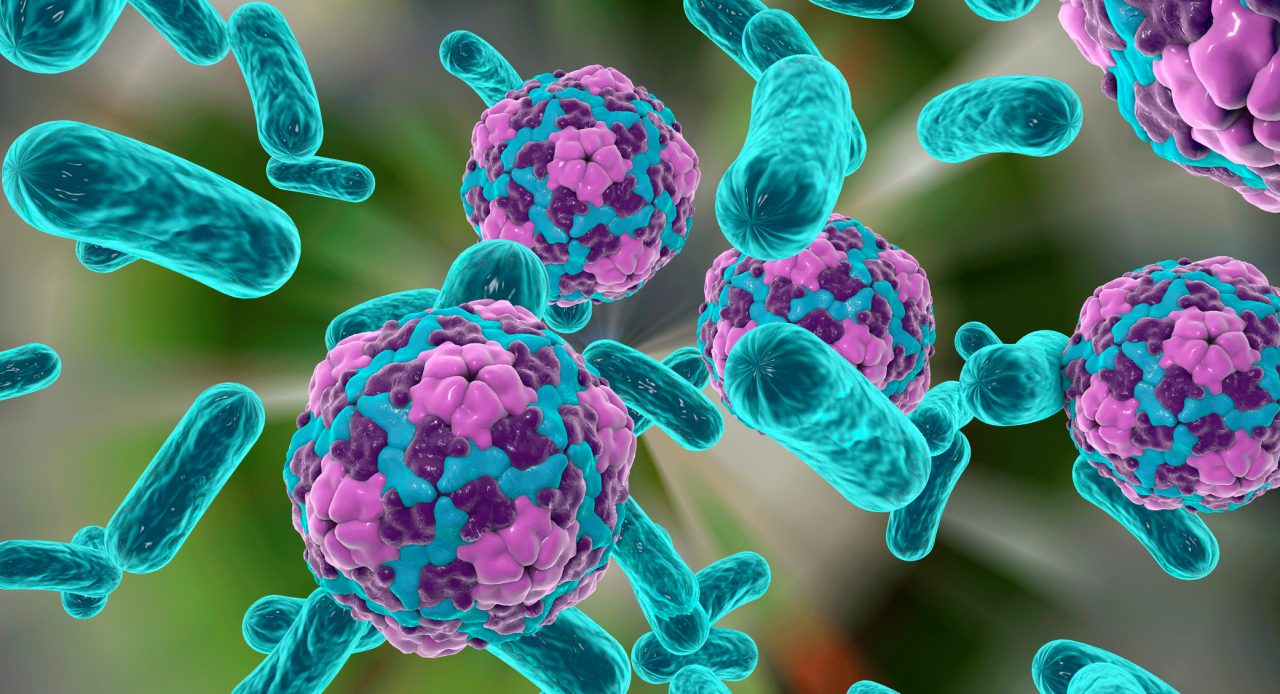What You Need to Know About Salmonella

Salmonella, the second leading cause of foodborne illness that affects millions of Americans every year, usually comes from eating raw or undercooked food.
You’ve probably seen at least one news story announcing a recall of alfalfa sprouts, peanut butter, or frozen seafood following a salmonella outbreak. According to the the Centers for Disease Control and Prevention, salmonella sickens about 1.35 million Americans annually, making it the second leading cause of foodborne illness after norovirus.
Most people who get sick from salmonella have a few days of stomach cramps, diarrhea, and fever, and then recover completely. But more than 26,000 people become sick enough to need treatment in a hospital, and 420 people die from salmonella each year.
YOU MIGHT ALSO LIKE: Diseases Caused by Bacteria
What causes salmonella infection?
Salmonella is a type of bacteria that causes the foodborne illness, salmonellosis.
Animals carry salmonella. You can get infected with these bacteria if you eat raw or undercooked animal products like:
- Burgers, steaks, pork chops, and other meats
- Chicken, duck, and other types of poultry
- Eggs and products made with eggs (like mayonnaise)
- Unpasteurized milk
- Fruits and vegetables
The bacteria lives in the intestines of many animals, including household pets. The animal may not show any signs of infection, but, if you handle the bacteria and then touch your mouth, they could pass to you and make you sick.
What are the symptoms of a salmonella infection?
Bloody diarrhea, nausea and vomiting, fever, and stomach cramps usually start 6 hours to 6 days after exposure to the bacteria, but it can sometimes take up to two weeks for these symptoms to appear.
Most people fully recover within 4 to 7 days without any treatment, but the infection can be more serious in certain groups of people, including:
- Children under age 5
- Adults 65 and older
- Anyone with a weakened immune system because of an organ transplant, a disease, or an immune-suppressing medication
Testing for salmonella infection
Your doctor may be able to diagnose you by symptoms alone. If you start to feel better in a few days, there is probably no reason to get tested.
Doctors diagnose salmonella infection with a blood or stool sample. The sample goes to a lab, which tests it for bacteria. Knowing what’s causing your symptoms will help your doctor determine whether you need treatment and, if so, which antibiotic to prescribe.
Treating salmonella infections
Get plenty of rest while your immune system works to clear the infection. Drink extra water, broth, or other clear liquids. Diarrhea and vomiting can cause dehydration. Your doctor might recommend that you take an over-the-counter medicine to stop the diarrhea or vomiting.
Most people don’t need antibiotics. The exception is if the bacteria make their way into your bloodstream. It’s a rare but serious occurrence. You’ll need antibiotics and possibly treatment in a hospital.
How to avoid salmonella
Wash your hands. Use soap and scrub under running water for at least 20 seconds before and after you handle food — especially raw meat, poultry, and seafood. Also wash your hands after using the bathroom or touching animals.
Clean cooking implements. Wash everything you used to prepare your meal — including utensils, cutting boards, and dishes — with soap and water. Use separate cooking tools and serving dishes for raw and cooked foods.
Sanitize surfaces. Clean the kitchen countertop, sink, and any other cooking surfaces with a store-bought disinfectant or a mixture of one tablespoon of bleach and one gallon of water.
Cook food thoroughly. Don’t rely on your eyes as a guide to doneness. Insert a food thermometer and keep cooking until the internal temperature reaches:
- 145° Fahrenheit (F) for beef, pork, ham, veal, lamb, and fish
- 160°F for ground meat (beef, pork, veal, and lamb) and egg dishes
- 165°F for whole and ground poultry (chicken, turkey, duck)
Refrigerate promptly. Don’t leave perishable foods out for more than two hours. Put them into the refrigerator or freezer as soon as you’re finished eating.
Updated:
July 14, 2023
Reviewed By:
Janet O'Dell, RN